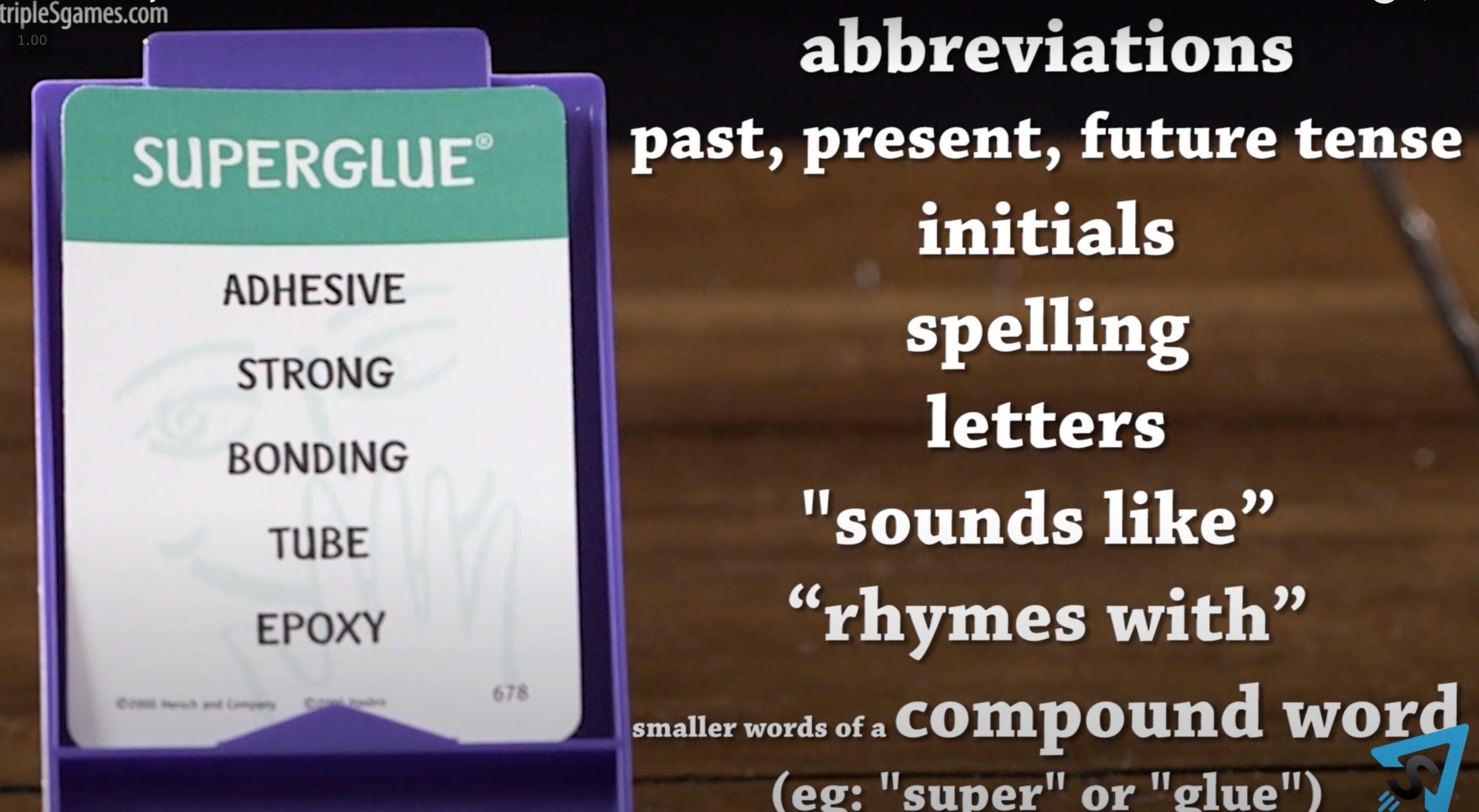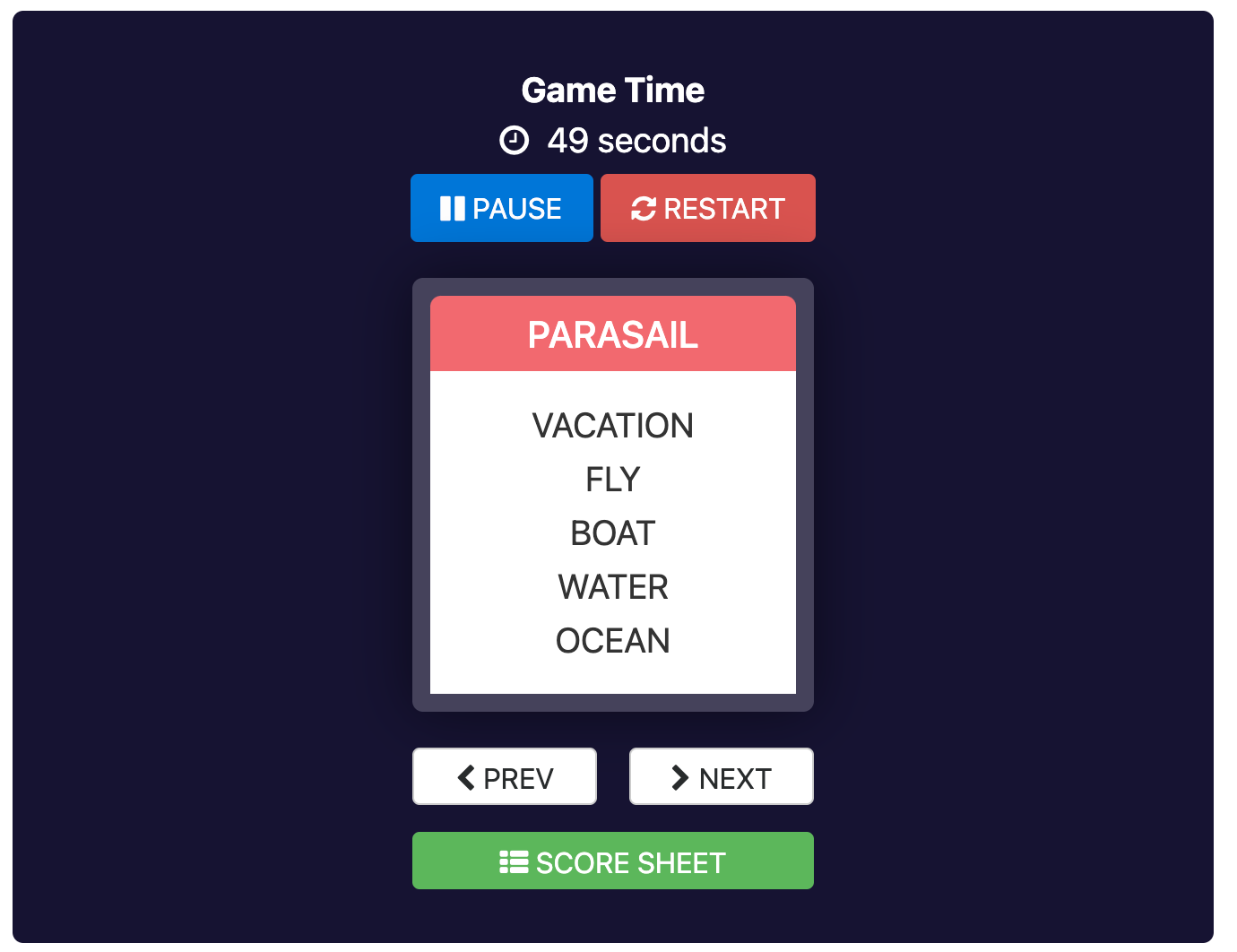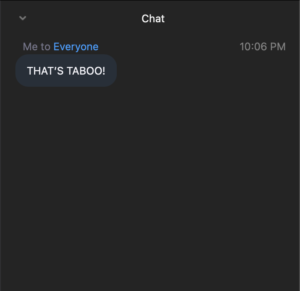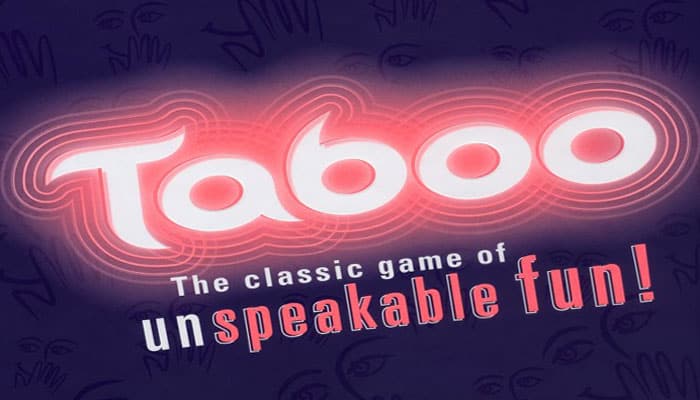Taboo is a word-guessing game where the objective is for a player to have their teammates guess the word on their card without using the word itself or the five additional taboo words listed on the card. Once a word is correctly guessed, the player moves on to the next card, and this continues until a time limit is reached. The game continues until each player has had their turn as the taboo ‘giver’. The team with the most number of points wins (+1 for each word guessed; -1 for a discarded card caused by the player passing or using a taboo word).
MORE RULES = MORE FUN

One of the first things I noticed about Taboo when I played it was the sheer number of rules and limitations that the game imposes on its players. The taboo ‘giver’ can’t say the taboo words, they can’t use any abbreviations, or make any sound-effects or gestures to provide a hint to their teammates. While the rules might take a few turns to fully grasp, I think they are one of the best parts of Taboo. These extensive set of limitations makes the game challenging, especially for non-intuitive words. It subsequently prevents the game from going stale, since every new word requires a new brand of creativity to clue in your teammates on what you’re getting at. In essence, the player is always learning novel strategies to play, and this continuous motion of learning makes the game fun.
RACE AGAINST TIME – A THEME

While most people would classify Taboo’s theme as a ‘guessing’ game, I think classifying it as a ‘race against time’ game would be more apt. This is because the guessing is only a difficult and rewarding challenge when players are forced to accomplish it in a limited timeframe. Placing a clock reminds players of what’s on the line for every wrong guess. Additionally, the time influences some interesting game decision choices. The taboo ‘giver’ can choose to pass on a card that they think is too hard; while they are knowingly getting a negative point by placing a card on the discard pile, they make this decision because they think they can win back more points by spending the time they save on easier cards.
KEEP EVERYONE INTERESTED

The final thing about Taboo that I thought was fascinating is how it engages all players at all times and limits the possibility of abuse/cheating in the process. When a team is playing their round, the other team knows what word they are trying to guess. Therefore, if the team’s giver decides to skirt the rules of the game by using hints concerning one of the taboo words, the other team can directly call them out by pressing the buzzer. This mechanism achieves fair-play regulation and ensures attention from both teams in every round. I thought this design strategy was a genius way to feed two birds with one scone.



